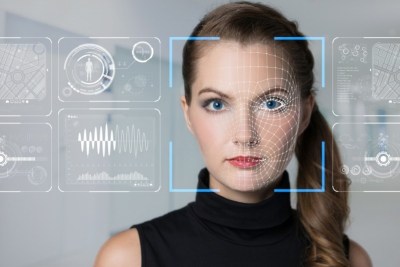Facial Recognition: What You Need to Know
Imagine you’re at a networking event. You see someone heading your way with a big smile on his face … you know the face but can’t seem to remember the name. In a nutshell, being able to associate the name with the face is the core of facial recognition, which is growing in popularity in pro AV markets.
Detection versus Recognition: What’s the Difference?
Many people use the terms “facial recognition” and “facial detection” interchangeably, but there is a world of difference between the two.
“Facial detection is a very broad-based term that is used when a system is able to identify that a human face is present, whereas facial recognition actually confirms identifying features or an identity and allows us to identify that person and deliver personalized media or services,” said Maris Ensing, vice president and chief engineer, Mad Systems.
“Each technology has its purpose,” added Diane Carlson, vice president, digital innovation solutions, Samsung SDS America. “For example, facial recognition technology is used by law enforcement to identify criminals. Privacy is sacrificed for the greater good.”
To alleviate privacy concerns, many pro AV solutions, including Samsung’s Nexshop, are designed specifically for facial detection. “At Samsung SDS, we use facial analysis in our solutions,” said Carlson. “Our intent is to approximate gender, age, and sentiment to better target marketing messages—no personal information is collected or stored.”
Scroll through the gallery below to see the latest facial recognition products for pro AV.

Samsung Nexshop-Enabled Display and Camera Sensor
With facial analysis, brands and retailers can engage consumers in an interactive and intelligent way. For instance, when a customer tries on a headset in front of a Samsung Nexshop-enabled display and camera sensor, the display can launch customized, dynamic content tailored to the customer’s demographic. The customer experience is improved with no personally identifying information collected or stored.

Mad Systems Facial/Color/Pattern/License Plate Recognition Solutions
Mad Systems’ patent-pending facial/color/pattern/license plate recognition solutions enable the delivery of targeted media content without requiring visitors to wear wristbands, RFID, or other tags. These systems use cameras and sensors to identify the person or group to whom to deliver targeted media. Mad Systems can integrate its Facial Recognition and Color Recognition processes with any audiovisual system, as well as with its own QuickSilver media delivery system.

NEC ALP
NEC ALP uses anonymous demographic data delivered via multiple sensors (camera, beacon, RFID, etc.) to automatically build an engaging experience for shoppers with tailored content. The platform collects non-identifying consumer data to drive insight and understanding and deliver key business intelligence via back-end dashboards. All ALP data is anonymous and not stored. ALP collects only demographic data, along with weather, inventory, and store traffic information to deliver the right content to the right audience.
Privacy Laws
With privacy laws and regulations being continually updated, what do integrators need to be concerned about, and how do they stay informed?
A daily selection of the top stories for AV integrators, resellers and consultants. Sign up below.
“They [integrators] shouldn’t be concerned about facial detection, but they should be educated on the differences between detection and recognition, and be able to articulate [the information] to their customer,” said Kelly Harlin, analytics platform strategist at NEC Display. “In fact, NEC Display is leading the charge when it comes to customer privacy and security. NEC ALP is completely GDPR compliant, and integrators can be confident when installing the platform that NEC is constantly working to stay ahead of legislation.”
Ensing, however, strongly believes integrators should be familiar with privacy laws and regulations across the board, even when it comes to facial detection. He says there are seven principles of privacy: consent, use, transparency, data security, privacy design, integrity, and accountability.v
“There are a great many applications already using this technology—biometrics for unlocking your phone, surveillance in stadiums, banks, airports, and retail,” he continued. “These privacy principles should be part of the design process and thoroughly mapped out with the client by the integrator.”
According to Ensing, Mad Systems designed its system with privacy concerns in mind. “Our system does not need to be internet-connected, and it uses encrypted vectors to identify significant aspects of the face,” he said. “We don’t even need to keep images—the encrypted vectors are enough. Even if you manage to crack the encryption, you cannot re-create an image of someone’s face from these vectors.”
Where is the industry headed from a legal standpoint? “As far as facial recognition is concerned, the public is not as accepting of advertisers or tech companies using this technology responsibly,” said Samsung’s Carlson. “In our opinion, the laws in this area will only get stricter over time.”
Improving the Experience
There is no doubt that facial recognition installations in pro AV are worth the costs, especially when it comes to digital signage installations and improving the customer experience.
“Facial detection in digital signage installations has endless potential across numerous sectors,” NEC’s Harlin emphasized. “The technology is primed for the retail and QSR spaces. By gathering non-identifying data like gender and age, the platform can recommend targeted advertisements immediately. The technology also has applications that NEC will be exploring in the future, including in the hospitality market, for those who operate cinemas, educational institutions, transportation hubs, hospitals, convention centers, and municipalities that operate as smart cities.”
[Engaging with Retail Technology]
Samsung’s Carlson agrees and says that facial analysis can improve the customer experience with relevant content based on anonymous demographic data. As an added benefit, “brands and retailers that successfully activate on this information may gain a lift in sales and customer satisfaction.”
Mad Systems has seen the benefits of facial recognition greatly impact museums, theme parks, and visitor centers, where the main benefit is better customer service. Ensing pointed out that most general information at these venues is targeted to the average visitor—missing most of their target audience. Using facial recognition allows relevant versions of information to be provided—for example, using simpler language for children and providing options for expert-level information for those who are interested in a deep dive.
“We are creating a better customer journey by offering tailored content for groups of visitors or for individual visitors, to meet ADA requirements, to provide content in different languages, and to provide content for different interest groups,” he said.
He pointed to theme parks as an example. Imagine you’re riding your favorite rollercoaster and the camera takes a snapshot of you as you cruise down the track at 75 mph. When the thrill is over, you patiently wait for someone to find your picture in the system so you can see the funny face you made. “As it stands now, that takes a considerable amount of time to wait to find your picture,” he said. “With facial recognition, it would be instantaneous, and you could continue your day in the park uninterrupted.”
The Future of Facial Analysis
The future undoubtedly holds more regulation when it comes to facial analysis, recognition, and detection, but it also offers the promise of expanded potential. Perhaps Ensing summed it up best: “This technology can be used for great things, and we’ve just started to unlock its full potential. This is truly 21st century AV!”
Megan A. Dutta is a pro AV industry journalist, and the former content director for Systems Contractor News (SCN) and Digital Signage Magazine, both Future U.S. publications. Dutta previously served as the marketing communications manager at Peerless-AV, where she led the company’s marketing and communications department. Dutta is the recipient of AVIXA's 2017 Young AV Professional Award and Women in Consumer Technology's 2018 Woman to Watch Award. Dutta is co-founder of Women of Digital Signage, an organization designed to provide a pathway to promote networking, mentoring, and personal growth.

